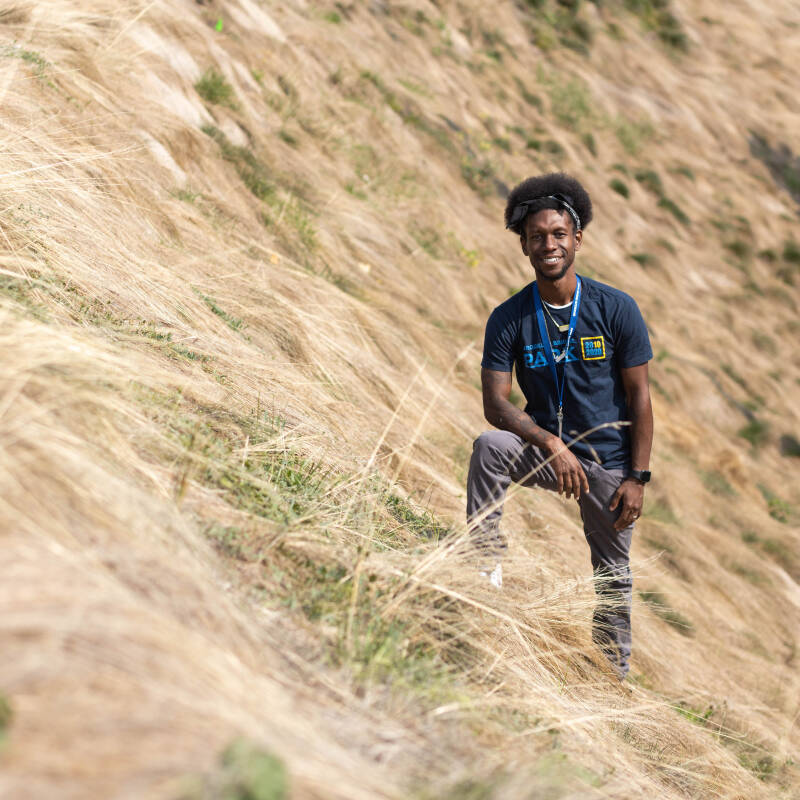Do you feel overwhelmed with doomsday news about species extinctions, melting ice caps, and extreme weather? Well, the good news is that each of us has the power to address our current climate crisis and take action right now in our gardens. But exactly where do we begin? One way is by rewilding.
What does “rewilding” even mean? (Spoiler alert: it doesn’t mean to let your garden become an overgrown wild jungle.) To help parse this term and make it digestible, I’ve asked Emily Murphy, author of Grow Now: How We can Save Our Health, Communities, and Planet—One Garden at a Time (published just this past month), to explain the term and provide us with some basic steps to follow.
Photography by Emily Murphy unless otherwise noted.
The Dirt on Rewilding

Emily explains that rewilding is, “a form of ecological restoration.” “Until recently, it’s often been associated with the reintroduction of apex predators, but this view is expanding as we consider how we can reassemble nature, create living greenways, nectar paths, and wildlife corridors.” The beauty is that wildness can exist in unexpected places and in small patches, and these spaces are even more powerful and transformative when they are connected, which means wildlife populations may also be connected. So whether your garden space is a balcony, community plot, or acres of land, you can take positive action and help your space be a safe stepping stone within a green corridor. Here are the steps to take to rewild your property.
1. Take care of the soil.

Every gardener knows the importance of healthy soil but rewilding goes deeper. You begin by assessing your existing soil and determining what it craves. Most likely you will need to feed and protect your soil and the best way is to top-dress with organic compost and mulch.
2. Use a no-dig approach.

Really, no back-breaking digging? Well, sort of. Emily explains, “The idea is that we can layer up rather than extensively dig down to cultivate soil.” She explains that we need to consider how nature grows herself, how leaves and other bits of organic matter fall to the ground, and how animals and microbes move these bits of nature about by eating, pooping, tunneling, depositing seeds—all without tilling the soil. She offers the example of squirrels. “Squirrels dig holes to hide seeds, but its point source, which is how we can approach planting—only dig a hole as large as is needed for the intended plant.” The concept is that by not massively disturbing and harming the soil, we are protecting and nurturing the soil ecosystem, which in turn helps our gardens and plants grow.
3. Get living roots in the ground.
Emily urges us to keep living roots in the ground with cover crops and perennials. “Living roots assist in feeding the soil ecosystem. Plants barter sugars and other plant-made compounds for hard-to-find nutrients and water with soil microbes. When plant roots are in the ground 24/7, microbes have a constant food supply.” She also tells me that approximately 90 to 95% of plants form relationships with mycorrhizal fungi, those critical members of the plant microbiome. The other important concept is that living roots and root systems, in general, also aid in creating soil with excellent structure and good tilth, meaning soil with large pore spaces for proper air and water movement.
4. Plant with a purpose.

Emily encourages us all to plant with biodiversity in mind. She tells us that we can nurture biodiversity by “growing a diverse range of plants and including natives and perennials in our plant list.” This also means removing invasive plants and moving away from resource guzzling lawn-centric yards. Emily reminds us that, “A biodiverse set of plantings fosters biodiversity of living organisms both above and below the ground.” And you might think your tiny garden doesn’t matter, but it really does; all the small spaces add up to create interconnected networks that support more life.
5. Garden organically.

Rewilding goes beyond organic but of course one of the major tenants is to garden without using harmful pesticides, herbicides, and synthetic fertilizers. Emily suggests using regenerative organic practices, such as applying compost and organic materials like worm castings, manure, or compost tea. She also urges us to “plant the right plant in the right place, which also requires a little bit of patience and generosity as it can take time for our gardens to behave more like garden ecosystems.”
6. Think like an ecosystem.

In Grow Now, Emily gets the reader asking themselves: How do we rewrite the narrative that got us into this mess? An important shared lesson: “Remember that we’re not separate from nature but profoundly part of it. We are nature. When we take time to be in nature, watch her ways, and understand the interconnection of all things, we discover that when we think like an ecosystem, we can begin approaching nature and landscapes with more heart and know-how.”
For similar content, see:
- Charles Dowding’s No-Dig (And No Weed) Garden in Somerset
- The Garden Decoder: What Is ‘Hugelkultur’
- The Garden Decoder: What Does ‘Organic Gardening’ Really Mean?








Have a Question or Comment About This Post?
Join the conversation